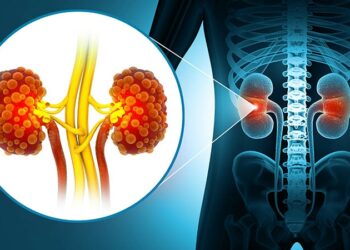SAN ANTONIO — Among patients with estrogen receptor (ER)-positive, HER2-negative advanced breast cancer, treatment with imlunestrant did not significantly improve progression-free survival (PFS) compared with standard endocrine therapy, except in those with ESR1 mutations, the phase III EMBER-3 trial showed.
Among 256 patients with these mutations, the median PFS was 5.5 months with imlunestrant and 3.8 months with standard therapy (HR 0.62, 95% CI 0.46-0.82, PSan Antonio Breast Cancer Symposium (SABCS).
The study was published concurrently in the New England Journal of Medicine.
In the overall study population, median PFS was 5.6 months with imlunestrant — a next-generation, brain-penetrant, oral selective ER degrader (SERD) — versus 5.5 months with standard therapy (HR 0.87, 95% CI 0.72-1.04, P=0.12).
Jhaveri and colleagues also evaluated imlunestrant in combination with the CDK4/6 inhibitor abemaciclib (Verzenio) versus imlunestrant alone among all patients, and found that the combination improved median PFS by 3.9 months (9.4 months vs 5.5 months), resulting in a 43% reduction in the risk of progression or death (HR 0.57, 95% CI 0.44-0.73, P
“Imlunestrant, as monotherapy or combined with abemaciclib, provides an all-oral targeted therapy option after progression on endocrine therapy for patients with ER-positive, HER2-negative advanced breast cancer,” Jhaveri said.
Of note, the combination of imlunestrant and abemaciclib demonstrated a PFS benefit regardless of ESR1 mutation status. The median PFS in patients with ESR1 mutations was 11.1 months with the combination compared with 5.5 months among those treated with imlunestrant alone (HR 0.53, 95% CI 0.35-0.80). The median PFS in patients without ESR1 mutations was 9.1 months and 5.5 months, respectively (HR 0.59, 95% CI 0.43-0.81).
The combination also demonstrated a consistent PFS benefit across other key subgroups, including patients who received prior treatment with CDK4/6 inhibitors, and those with PI3K pathway mutations.
Interim overall survival (OS) analyses at 31% maturity in patients with ESR1 mutations, and 23% maturity among all patients, demonstrated a favorable overall trend with imlunestrant. The OS analysis for the combination therapy comparison was 15% mature, with more deaths having occurred in the combination arm.
SABCS invited discussant Harold Burstein, MD, PhD, of the Dana-Farber Cancer Institute and Harvard Medical School in Boston, observed that new oral SERDs such as imlunestrant and elacestrant (Orserdu) “appear to be more active than fulvestrant” in ER-positive advanced breast cancer with ESR1 mutations, “likely owing to bioavailability and dosing considerations.”
Burstein added that results from EMBER-3, as well as other data, suggest that combining these oral SERDs with a second-line CDK4/6 inhibitor such as abemaciclib “can achieve substantial durations of tumor control irrespective of ESR1 or PIK3CA status, and this may well foreshadow a future treatment option.”
For the EMBER-3 study conducted from October 2020 through November 2023, Jhaveri and colleagues enrolled patients with ER-positive, HER2-negative advanced breast cancer that recurred or progressed during or after aromatase inhibitor therapy, administered alone or with a CDK4/6 inhibitor.
Overall, 874 patients were randomized, with 331 assigned to imlunestrant, 330 to standard therapy (mostly fulvestrant [Faslodex]), and 213 to imlunestrant/abemaciclib. Among all patients, the median age was 61 years, 55.5% had visceral metastases, and 59.8% had previously received a CDK4/6 inhibitor.
A total of 256 patients across the imlunestrant group (138 patients) and standard-therapy group (118 patients) had ESR1 mutations, with baseline characteristics similar to patients in the overall population, except for slightly higher percentages of patients with PI3K pathway mutations (50.4%), liver metastases (40.6%), and previous CDK4/6 inhibitor treatment (69.5%).
In post hoc analyses, the 12-month cumulative incidence of central nervous system (CNS) progression was 1.5% with imlunestrant and 6.7% with standard therapy among patients with ESR1 mutations (HR 0.18, 95% CI 0.04-0.90). Among all patients, the incidence of CNS progression was 1.6% with imlunestrant and 3% with standard therapy (HR 0.47, 95% CI 0.16-1.38). “However, the hazard ratio estimates should be interpreted with caution, given the low event rate,” Jhaveri noted.
The most common treatment-emergent adverse events (TEAEs) were fatigue, diarrhea, and nausea, “which were no more than a 10% increase compared to standard endocrine therapy,” Jhaveri said. Grade ≥3 TEAEs were reported in 17% of patients in the imlunestrant group and 21% in the standard endocrine therapy group. Serious adverse events were reported in 10.4% and 11.4%, respectively. In each of these two groups, six patients died due to adverse events.
Dose reductions occurred in 2.4% of the patients who received imlunestrant and in none of the patients who received standard therapy, and permanent discontinuations occurred in 4.3% and 1.2%, respectively.
Disclosures
The study was sponsored by Eli Lilly.
Jhaveri reported relationships with AbbVie, AstraZeneca, Blueprint Medicines, Daiichi Sankyo, Eisai, Eli Lilly, F. Hoffmann-La Roche, Genentech, Gilead, Merck, Novartis, Olema, Pfizer, Puma Biotechnology, Scorpion Therapeutics, Stemline, and Zymeworks.
Primary Source
New England Journal of Medicine
Source Reference: Jhaveri KL, et al “Imlunestrant with or without abemaciclib in advanced breast cancer” N Engl J Med 2024; DOI: 10.1056/NEJMoa2410858.
Source link : https://www.medpagetoday.com/meetingcoverage/sabcs/113347
Author :
Publish date : 2024-12-11 21:19:06
Copyright for syndicated content belongs to the linked Source.


![author['full_name']](https://newshealth.biz/wp-content/uploads/2024/12/Oral-SERD-Impresses-in-Advanced-Breast-Cancer-With-ESR1-Mutations.jpg)












